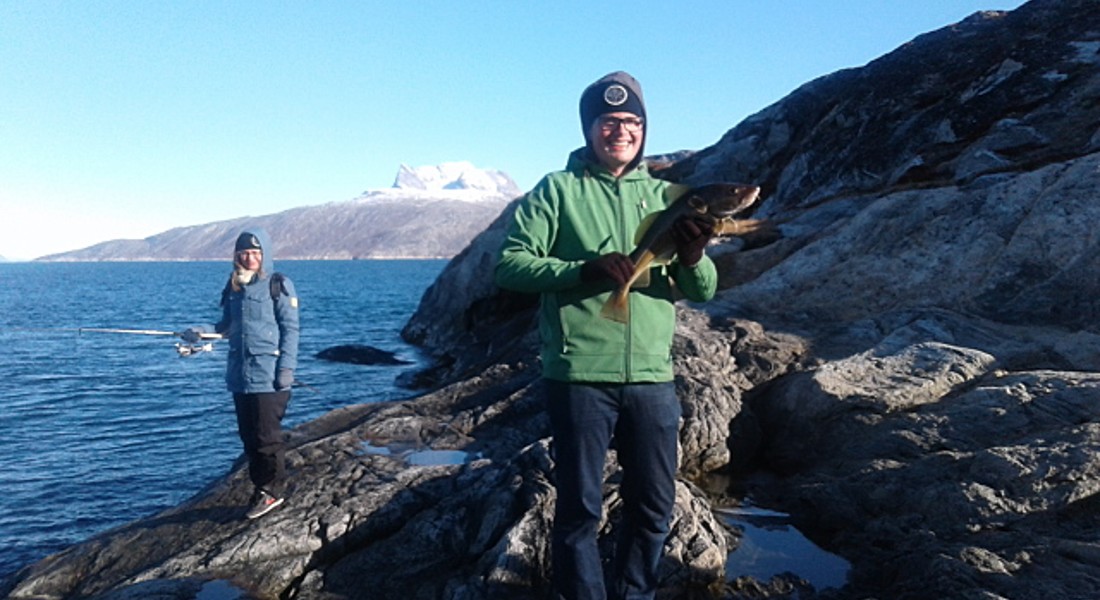For some Greenlanders, eating sugar is healthy
A genetic variation among some Greenlanders makes sugar healthy – significantly more than for most people. According to a new study by University of Copenhagen researchers and their colleagues, gut bacteria and a unique diet that has nourished Greenlanders for millennia have provided them with a genetic variation that offers an incredible advantage.

Imagine being able to swap out broccoli for sweets, Ben & Jerry's or some other sugary treat and achieve the same health benefits. This is fact not fantasy for about two to three percent of the Greenlandic population.
Two copies of a gene variant make it so that they absorb sugar differently than other people do.
"Adult Greenlanders with the genetic variation have lower BMI, weight, fat percentage, cholesterol levels and are generally significantly healthier. They have less belly fat and might find it easier to get a six pack. It is amazing and surprising that a genetic variation has such a profoundly beneficial effect," says University of Copenhagen biology professor Anders Albrechtsen.
Health benefits in numbers
The researchers' results show that Greenlanders who carry two copies of the genetic variation, known as sucrase-isomaltase - one from both their parents - have on average:
- Lower BMI, approx. - 2 kg/m²
- Lower weight, approximately - 4.8 kg
- Lower fat percentage, approximately - 3.3 percentage points
- Less triglyceride (risk marker for cardiovascular disease and cholesterol) in the blood -0.3 mmol/L
Along with colleagues from the University of Copenhagen, the University of Southern Denmark and a number of research institutions and public agencies in Greenland, Professor Albrechtsen analysed data from 6,551 adult Greenlanders and conducted experiments on mice.
The results demonstrate that carriers of the genetic variation have what is known as sucrase-isomaltase deficiency, meaning that they have a peculiar way of metabolizing sugar in the intestine. Simply put, they do not absorb ordinary sugar in the bloodstream the way people without the genetic variation do. Instead, sugar heads directly into their intestine.
"Here, gut bacteria convert the sugar into a short-chain fatty acid called acetate, which in previous studies has been shown to reduce appetite, increase metabolism and boost the immune system. That is most likely the mechanism happening here," explains Mette K. Andersen, an assistant professor at the Center for Metabolism Research at the University of Copenhagen and first author of the study.
Why genetic variation is widespread among Greenlanders
The reason for this widespread genetic variation among Greenlanders is due to a diet that has stood out from that of the rest of the world for millennia.
"It is probably due to Greenlanders not having had very much sugar in their diet. For the most part, they have eaten meat and fat from fish, whales, seals and reindeer. A single crowberry may have crept in here and there, but their diet has had minimal sugar content," says Anders Albrechtsen.
He adds that this has made the genetic variation frequent, as there has never been a need to absorb sugar rapidly in the bloodstream.

Greenlander’s diet has previously consisted of mainly fat and proteins from fish and reindeer and almost no sugar. This has shaped their way of processing sugar. On the photo, you see Professor Anders Albrechtsen with his colleague Ida Moltke on a fishing trip in Nuuk, Greenland. Photo: Anders Albrechtsen.
Genetic variation is tough on children
While the variation has clear health benefits for adult Greenlanders, it is problematic for their children.
"Younger carriers of the variation experience negative consequences due to their different type of sugar absorption. For them, consuming sugar causes diarrhea, abdominal pain and bloating. Our guess is that as they age, their gut bacteria gradually get used to sugar and learn how to convert it into energy," explains Torben Hansen, a doctor and professor at the University of Copenhagen’s Foundation Center for Basic Metabolic Research.
He and the research team hope that they can use the results of their new study to lay the groundwork for developing new drugs that might one day be used to treat cardiovascular disease and obesity.
"We can see that the genetic variation provides a better balance of fat in the bloodstream, which results in lower weight and consequently, fewer cardiovascular diseases. If you can develop a drug that inhibits the sucrase-isomaltase gene, then in principle, we might all be able to have equally strong health profiles," he concludes.
Dietary experiments on mice
- Beyond the deployment of health data from 6,551 Greenlanders, researchers supplemented their study with dietary experiments on mice. They sought to investigate what happens in the intestines of people with the genetic variation.
- To do so, they examined two groups of mice. One group had an artificially inhibited ability to absorb sugar, similar to the genetic variation found among Greenlanders. The second group had normal sugar absorption.
- Their results demonstrated that when mice with the inhibited ability gained free access to a diet of fat and sugar, they gained only half as much weight as the other group of mice. This confirms the researchers' analysis of health data showing that the genetic variation provides a range of health benefits, including lower weight and BMI.
Kontakt
Anders Albrechtsen
Professor
Department of Biology
University of Copenhagen
aalbrechtsen@bio.ku.dk
+45 21974249
Mette K. Andersen (Lepola)
Assistant Professor
Center for Basic Metabolic Research
University of Copenhagen
Metteandersen@sund.ku.dk
+45 35325282
Torben Hansen
Professor
Center for Basic Metabolic Research
University of Copenhagen
torben.hansen@sund.ku.dk
+45 20565301
Ida Eriksen
Journalist
Faculty of Science
University of Copenhagen
+45 93 51 60 02
ier@science.ku.dk
